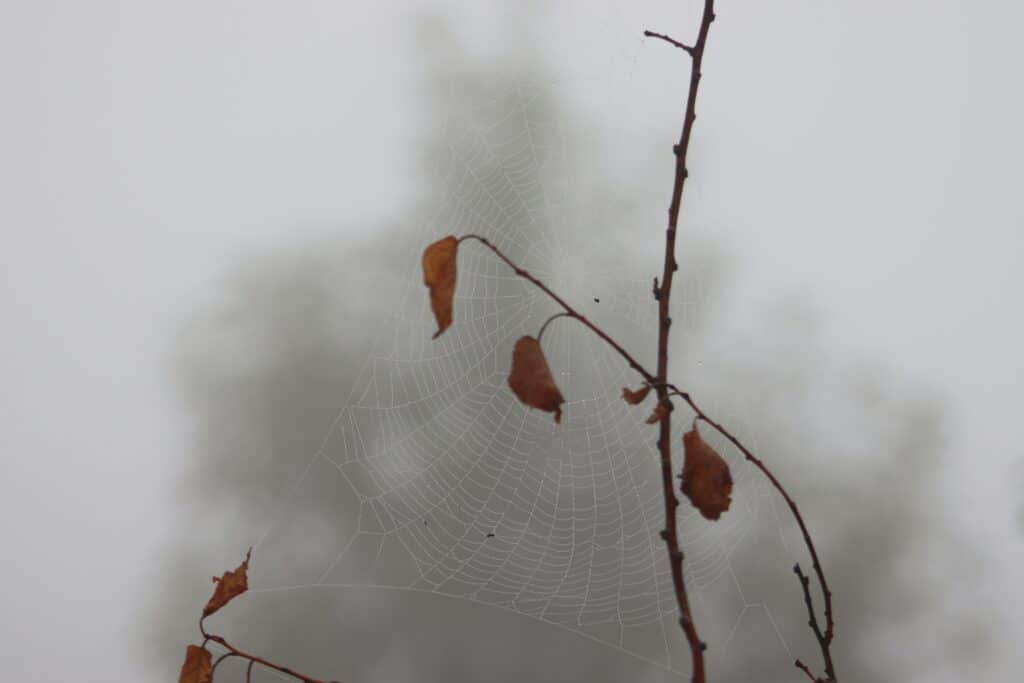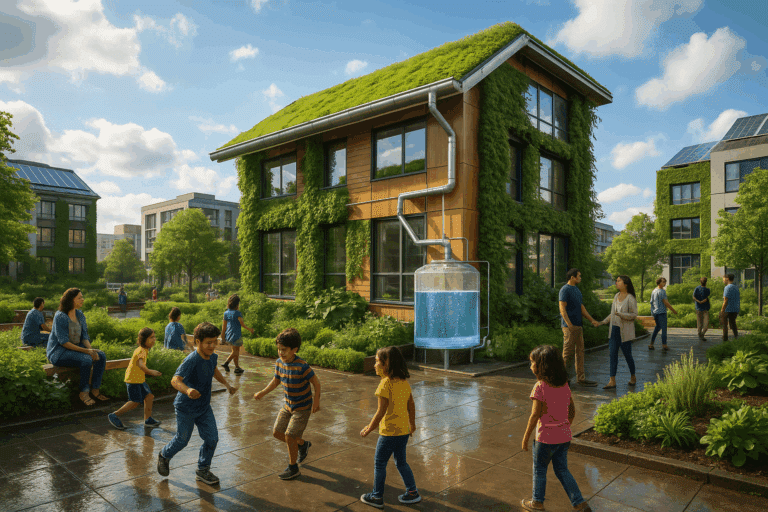One such innovation is the DIY fog catcher net, a fascinating tool capable of harvesting dew in arid regions. Imagine a life where the morning haze is not just a spectacle to admire, but a resource to tap into, a natural source of clean water! This post will walk you through the details of this remarkable invention, shedding light on its design, functionality, and immense potential.

Think about areas with dry, arid climates; regions where rainfall is as scarce as water itself. The concept of fog catcher nets is a beacon of hope in such landscapes, where every drop of water is precious. These ingenious devices can be an answer to the escalating global water crisis, providing a sustainable and cost-effective way to procure water. Our post will delve into the mechanism of these nets, their efficiency, and the science behind fog harvesting.
We will also take you through a step-by-step guide on how to build your own DIY fog catcher net. Contrary to what one might think, these nets are not complex machines requiring expert knowledge. They are simple, easy to construct and can be a rewarding DIY project. Furthermore, we will explore the potential of these fog catchers beyond just water collection, discussing their impact on agriculture, environment, and local communities.
Lastly, we will share success stories from different parts of the world where fog catcher nets have made a significant difference. These real-life examples will provide insights into the incredible potential this technology holds, and the life-changing impact it can have on communities facing water scarcity. So, prepare to embark on a journey of discovery into the world of fog harvesting and its fascinating applications.
Understanding the Basics of a DIY Fog Catcher Net
A Fog Catcher Net, also known as a fog harvester, is a simple yet powerful solution to address water scarcity in arid and semi-arid regions. This system transforms an often-overlooked resource—fog—into usable water for irrigation, wildlife support, or even human consumption (with proper treatment).
While the underlying principle is straightforward, the potential impact is significant. Countries like Chile, Nepal, and California in the United States have adopted fog harvesting to support remote communities, agricultural projects, and reforestation efforts. Its simplicity and scalability make it ideal for both community-scale projects and home-based DIY systems.
Fog, composed of tiny airborne water droplets, passes through a vertically suspended mesh net. As the fog moves through the mesh, the droplets condense on the surface, coalesce into larger drops, and eventually drip down into a collection trough or pipe, which directs the water into a storage container.
Selecting the Appropriate Materials
Choosing the right materials is essential for ensuring that your fog catcher operates efficiently and lasts over time. Below are the key components and considerations:
- Mesh Netting: This is the most critical part of the system. The mesh must provide enough surface area and structure to allow water droplets to accumulate.
- High-density polyethylene (HDPE) mesh is a top choice due to its UV resistance and durability, especially in coastal or high-sun regions.
- Shade cloth (35% to 50% density) is commonly used because it’s breathable and allows wind and fog to pass through while effectively trapping moisture.
- Frame: The structure must hold the mesh upright and stable in varying weather conditions.
- PVC pipes are lightweight and easy to assemble but may degrade over time.
- Galvanized steel or aluminum tubing is more durable and suited for larger, long-term installations.
- Treated wood can work for smaller, low-cost projects but requires maintenance to prevent rotting.
- Collection Container: Collected water should be stored safely and hygienically.
- Use a food-safe plastic barrel or tank with a tight-fitting lid to keep out debris and insects.
- Ensure proper drainage from the mesh into the container via gutters or plastic tubing.
- If possible, store the water in a cool, shaded area to reduce the risk of algae growth.
Additional supplies such as tension ropes, hooks, and stakes may be necessary depending on the location and size of your fog catcher. With proper materials and strategic placement—ideally in a fog-rich, elevated, and open area—you can begin harvesting water from the air and contribute meaningfully to sustainable water collection.
Choosing the Right Design and Location
Selecting the right design and location for a fog catcher is critical to its performance. While the concept of capturing moisture from the air may seem simple, the effectiveness of the system depends largely on thoughtful planning, especially in regard to local environmental conditions such as terrain, wind direction, and fog density.
Design Considerations
The most common and efficient design is the vertical mesh panel, which is installed perpendicular to the prevailing wind direction. This orientation maximizes the fog catcher’s exposure to moisture-laden air, allowing the mesh to trap the highest volume of water droplets as fog passes through it.
A standard fog catcher often measures around 4 meters wide by 3 meters high, dimensions that balance structural stability with water yield. This size is ideal for community or agricultural use in fog-rich regions. However, fog catchers are highly scalable—you can create smaller units for household gardens or larger multi-panel systems for reforestation or municipal water supply projects. Modular setups are also useful, allowing multiple units to be installed in series and adapted to varying topography.
When designing your fog catcher, also consider:
Drainage system: Ensure that the water collection trough or gutter at the bottom is angled correctly and channels water efficiently into storage tanks, with protection against contamination and overflow.
Material strength: Use UV-resistant and corrosion-resistant materials, especially if located in coastal areas with salt-laden air.
Mesh type: Double-layered Raschel mesh is often used for its durability and optimal droplet formation. The mesh should be tightly secured but allow for slight movement to facilitate drip collection.
Location Considerations
The success of a fog catcher is directly influenced by its placement. The ideal location should be routinely exposed to dense fog, especially during early mornings or seasonal shifts. Elevation plays a key role—higher altitudes tend to intersect with low-lying clouds and fog banks more frequently, increasing the duration and consistency of exposure.
Other key location factors include:
Land stability: Ensure the site is stable enough for anchoring support poles. Fog catchers must be able to withstand strong winds, especially during storms, so consider installing guy wires or foundation blocks for added support.
Wind exposure: Choose a site with consistent wind patterns. Avoid placing fog catchers in valleys or behind buildings, trees, or ridgelines that may block airflow. An open slope or ridge that faces the prevailing wind direction is optimal.
Accessibility: While remote locations might capture more fog, they should also be accessible for maintenance, storage tank management, and occasional cleaning of the mesh and frame.
Assembling Your DIY Fog Catcher Net
Now that you’ve selected your materials, design, and location, it’s time to start building. Here’s a simple step-by-step guide:
- Set up your frame in the chosen location. Ensure it’s secure and won’t be easily toppled by wind.
- Attach the mesh netting to the frame. It should be taut but not overly stretched.
- Position your collection container beneath the netting. You can use a gutter or pipe to direct the water from the net into the container.
- Monitor the system regularly for any required adjustments or repairs.
Maximizing Water Collection and Efficiency

Although constructing and installing a fog catcher is relatively straightforward, achieving optimal performance requires attention to several key factors. A well-maintained and properly oriented fog catcher can significantly increase water yield, making it an invaluable tool in arid and fog-rich regions.
- Mesh Netting Maintenance: The mesh used in fog catchers is the heart of the system. It’s where tiny droplets in the fog condense and collect before dripping into storage. However, over time, dust, dirt, and biological material like pollen or spider webs can clog the fibers of the mesh, reducing surface contact and hindering water accumulation. Regularly cleaning the mesh with a soft brush or rinsing it with clean water helps maintain efficiency. In coastal or polluted areas, clean the netting more frequently to remove salt and particulate buildup.
- Wind Direction: The efficiency of a fog catcher largely depends on its exposure to consistent fog-laden winds. If wind direction shifts seasonally or daily, adjusting the orientation of the catcher can significantly increase water capture. Use wind vanes or local weather data to determine prevailing directions and reorient the mesh accordingly. Some advanced installations include movable frames to pivot toward changing winds.
- Water Storage: Once water is collected, proper storage is essential to maintain quality. Always use food-grade or UV-resistant containers, and store them in a cool, shaded location to reduce evaporation and prevent algal blooms. Cover storage containers with tight-fitting lids to keep out insects, debris, and animals. If you’re collecting water for household or agricultural use, consider integrating a basic filtration system to remove impurities before use.
A Simple Innovation with Lasting Impact
Building a DIY fog catcher net is more than just a hands-on sustainability project—it’s a practical step toward addressing water scarcity in an environmentally responsible way. While the materials are relatively inexpensive and the concept is simple, the impact of this system can be profound, especially in regions where traditional water sources are limited or unreliable.
By understanding the mechanics of condensation, selecting the right mesh and frame materials, and placing the system in an optimal location, even a basic fog catcher can provide a consistent source of clean water. Whether used for irrigating gardens, supporting reforestation, or supplementing domestic water supplies, fog catchers offer a low-tech, high-yield solution that aligns with global sustainability goals.
Moreover, DIY fog catchers empower individuals and communities to take control of their local water resources. They promote resilience, reduce dependency on centralized infrastructure, and raise awareness of alternative water harvesting techniques.
In a world facing increasing climate unpredictability and growing water challenges, the fog catcher stands out as a symbol of innovation, simplicity, and hope. With the right knowledge and motivation, anyone can harness the sky’s hidden moisture—transforming fog into a life-giving force.
Applications of the Harvested Haze
The water harvested from fog catchers is often clean and low in minerals, making it suitable for a variety of uses—especially in regions where other sources are unreliable or nonexistent.
Human Consumption: While fog water is generally low in contaminants, it must be filtered and tested before being considered potable. Use ceramic, carbon, or UV filters, and follow local health guidelines for safe treatment and storage.
Irrigation: One of the most practical uses is irrigating small gardens, reforestation projects, or school farms in arid or semi-arid climates. Even a small-scale system can provide enough water to sustain food crops or native vegetation.
Groundwater Recharge: In degraded or deforested areas, fog harvesting can help replenish groundwater reserves when the collected water is directed into infiltration pits or slow-release systems. This can have long-term ecological benefits, restoring natural hydrological cycles.
Wildlife Support: Remote areas suffering from drought or desertification often lack access to safe water sources for fauna. Installing wildlife watering stations fed by fog catchers can support biodiversity and stabilize fragile ecosystems.
Conclusion
In conclusion, the ‘Harvest the Haze: DIY Fog Catcher Net for Gathering Dew in Arid Regions’ has showcased the innovative approach to water collection in arid regions. This ingenious technique is not just cost-effective but also environmentally friendly, addressing the growing concern of water scarcity in a sustainable manner. The DIY fog catcher, with its easy installation and maintenance, is proving to be a boon for the communities in arid regions, providing them with a reliable and continuous supply of fresh water. As climate change exacerbates water scarcity globally, these low-tech and affordable solutions can be a game-changer, offering a lifeline to those living in water-stressed regions. Furthermore, the fog catcher’s ability to produce dew is an excellent example of how we can effectively harness natural resources, particularly in areas where conventional water sources are scarce or non-existent. This article serves as a testament to human ingenuity in the face of adversity and highlights the need for more such sustainable solutions in the future. Undeniably, the DIY fog catcher is a promising answer to water scarcity in arid regions, paving the way for a more sustainable future.



